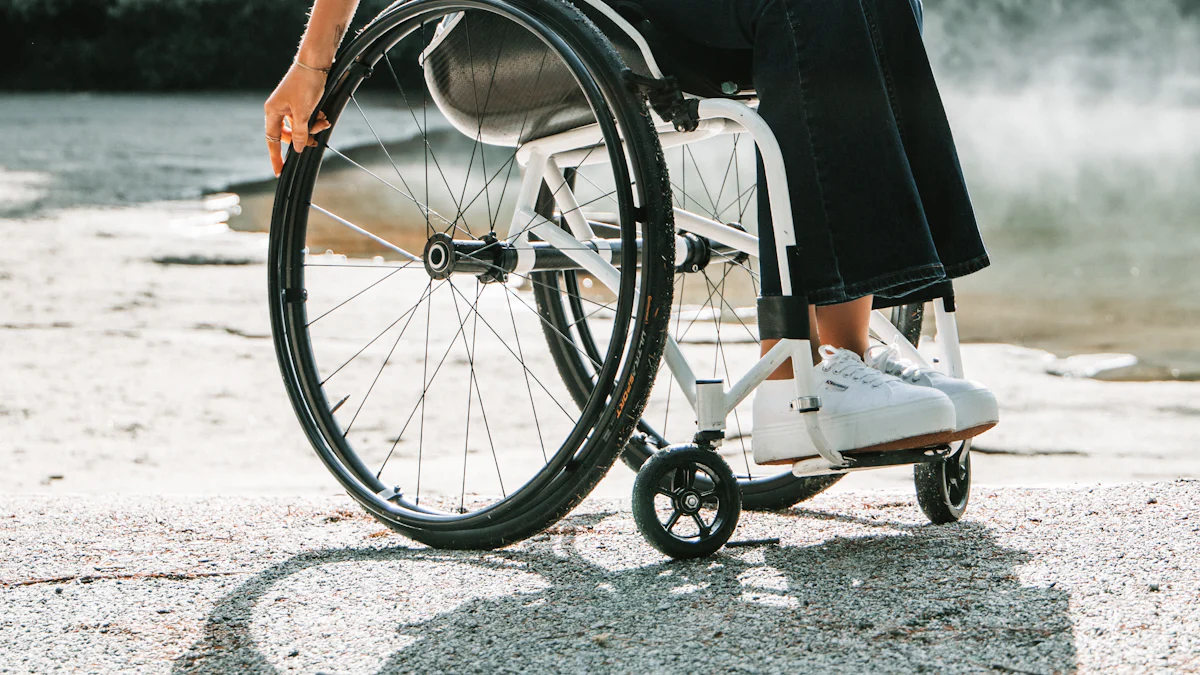
Wheelchair ramps play a crucial role in enhancing accessibility for individuals with mobility challenges. Many Americans face difficulties with walking, which highlights the need for effective solutions. A ramp for wheelchair access provides independence and safety. Various options exist to cater to different needs. Portable, threshold, and permanent ramps offer unique features. Each type serves specific purposes and environments. Understanding these options helps in making informed choices for accessibility improvements.
Portable Ramps

Features and Benefits
Portable ramps offer great flexibility for those needing temporary solutions. These ramps are lightweight, making them easy to carry and set up. EZ-ACCESS Suitcase® Portable Wheelchair Ramps provide a convenient option. You can fold these ramps in half and carry them like a suitcase. The aluminum construction ensures durability and a non-skid surface enhances safety. This type of ramp for wheelchair access supports up to 800 lbs., making it suitable for various needs.
Portable ramps excel in temporary situations. Users find them ideal for travel or short-term use. The Single-fold Portable Ramp offers quick setup and portability. Its lightweight design makes transportation simple. These features make portable ramps a practical choice for many scenarios.
Drawbacks
Despite their benefits, portable ramps have limitations. The weight capacity is often lower than permanent options. Some models may not support heavier wheelchairs or scooters. Terrain can also pose challenges. Portable ramps may not work well on uneven surfaces. Users should consider the environment where the ramp for wheelchair access will be used.
Portable ramps require careful consideration. The Multi-fold Ramps offer more length but can be heavy and difficult to set up. These factors might limit their usability in certain situations. Users must weigh the pros and cons to determine the best fit for their needs.
Threshold Ramps
Threshold ramps provide a seamless transition over small elevation changes. These ramps are essential for users of mobility devices who encounter raised surfaces or doorways. Threshold Wheelchair Ramps offer a smooth surface for easy access, making them ideal for traversing door thresholds.
Features and Benefits
Easy Installation
Threshold ramps boast an easy installation process. Users can set up these ramps quickly without the need for professional help. The Adjustable Threshold Ramp allows perfect height matching with the landing. Users can raise or lower the ramp using threaded legs. This feature ensures that the ramp fits perfectly in various settings.
Suitable for Small Elevation Changes
Threshold ramps excel in managing small elevation changes. These ramps are designed to overcome bumps or thresholds from 1/2 inch to 6 inches in height. Materials like aluminum or rubber ensure a smooth transition. The ADA-Compliant Aluminum Wheelchair Threshold Ramp supports both indoor and outdoor use. This versatility makes threshold ramps a practical choice for many environments.
Drawbacks
Limited to Specific Height Adjustments
Threshold ramps have limitations in height adjustments. These ramps work best for minor elevation changes. Users should consider the specific height requirements before choosing a threshold ramp. The Aluminum Threshold Ramp may require door modifications for proper installation. This factor limits its use in certain scenarios.
May Not Be Suitable for Outdoor Use
Some threshold ramps may not suit outdoor environments. Factors like weather conditions and terrain affect their performance. Users should evaluate the intended location for ramp installation. The Threshold Ramps provide an appropriate incline for typical rises in a home. However, outdoor use may require additional considerations.
Threshold ramps offer valuable solutions for small elevation challenges. Users must assess their specific needs and environment to select the most suitable option.
Permanent Ramps

Permanent ramps provide a reliable solution for long-term accessibility needs. These ramps offer stability and durability, making them ideal for homes or buildings with multiple steps or elevated entrances.
Features and Benefits
Durable and Long-lasting
Permanent ramps stand out for their durability. Materials like concrete, aluminum, or wood ensure a robust structure. An aluminum ramp offers a low-maintenance option that withstands various weather conditions. The strength of permanent ramps enhances safety for users. A well-installed ramp can last for many years without significant wear.
Customizable to Fit Specific Needs
Customization is a key advantage of permanent ramps. You can tailor the design to fit specific spaces and requirements. A permanent ramp can accommodate unique home designs. The flexibility in design allows for integration with existing structures. Customization ensures that the ramp meets individual accessibility needs effectively.
Drawbacks
Higher Cost and Installation Time
The cost of permanent ramps can be higher compared to portable or threshold options. Materials and professional installation contribute to the expense. Installation time may also be longer. The process requires careful planning and construction. The investment in a permanent ramp pays off with long-term benefits.
Requires Professional Installation
Professional installation is necessary for permanent ramps. Experts ensure that the ramp complies with safety standards. Proper installation guarantees stability and functionality. Professional services add to the overall cost. The expertise provided by professionals ensures a high-quality outcome.
Permanent ramps offer a dependable solution for accessibility. The durability and customization options make them suitable for long-term use. Consider the cost and installation requirements when choosing a permanent ramp.
Choosing the right wheelchair ramp enhances accessibility and independence. Portable ramps suit temporary needs with easy transport. Threshold ramps work well for small elevation changes indoors. Permanent ramps offer durability for long-term solutions. Consider your specific needs: temporary or permanent. Evaluate factors like weight capacity and terrain. Adhering to ADA guidelines ensures safety and functionality. Selecting the perfect ramp promotes inclusivity and ease of access.









